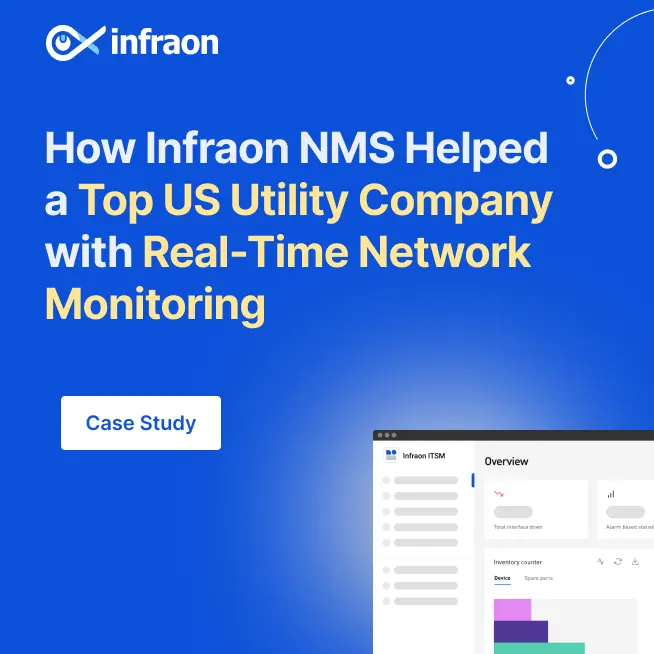Bandwidth is one of the most important resources in a network. It refers to the maximum amount of data that can be transmitted over a connection in a given time. Just like traffic lanes on a highway, bandwidth determines how much information can flow smoothly without congestion. In a business environment, every email, video call, and cloud application relies on sufficient bandwidth to run efficiently.
This is why bandwidth monitoring has become a vital part of IT operations. It enables businesses to monitor the amount of network bandwidth being used, by whom, and for what purpose. Without it, companies risk slow applications, unexpected costs, and even downtime.
In this guide, we will explore what is bandwidth monitoring, how it works, its benefits, and how to choose the right bandwidth monitoring tool for your organization.
What Is Bandwidth Monitoring?
Bandwidth monitoring is the process of measuring and analyzing how much data is moving across a network at any given time. It displays the actual network bandwidth usage in comparison to the available capacity.
Bandwidth usage refers to the amount of data that devices, applications, or users consume. For example, a video streaming service may use much more bandwidth than email, which can impact other applications if not managed.
It is essential to distinguish between monitoring and managing bandwidth. Monitoring involves tracking and analysing usage, while managing focuses on controlling or shaping that usage. Both are critical for ensuring smooth network performance.
A real-world example of bandwidth monitoring would be an organization that notices spikes in traffic every afternoon. By analyzing the data, the IT team may discover that large file transfers are slowing down essential business applications. With this insight, they can implement policies to prioritize business-critical traffic.
Why Is Bandwidth Monitoring Important?
Monitoring network bandwidth is crucial for several reasons:

- Ensures optimal performance: By identifying which applications consume the most bandwidth, IT teams can prevent bottlenecks and maintain responsiveness.
- Reduces congestion and downtime: Monitoring helps to spot unusual spikes in bandwidth usage before they cause outages.
- Improves security: Abnormal traffic patterns may indicate security threats such as malware or unauthorized data transfers.
- Supports resource optimization: Bandwidth monitoring enables better allocation of network resources, ensuring compliance and reducing waste.
Benefits of Monitoring Network Bandwidth
1. Better Network Performance
Monitoring provides real-time visibility into network traffic. This ensures systems remain available, response times improve, and business processes run without delays.
2. Cost Saving
A bandwidth monitoring tool highlights unused capacity and prevents over-provisioning. Businesses can avoid unnecessary infrastructure spending by only paying for the bandwidth they truly need.
3. Capacity Planning
Bandwidth analysis allows organizations to forecast future demand. With historical usage patterns, IT leaders can scale resources more effectively.
4. Prioritise Alerts and Reduce Overload
By focusing alerts on critical issues, IT teams can avoid alert fatigue and manage network saturation before it impacts productivity.
Best Practices for Monitoring Network Bandwidth
1. How to Analyze Network Bandwidth Usage
Begin by identifying peak usage hours, the top bandwidth-consuming users, and heavy applications. This analysis highlights areas that need attention.
2. How to Control Bandwidth Usage
Once insights are available, IT teams can implement policies such as Quality of Service (QoS) rules or traffic shaping. These techniques ensure essential applications always receive priority.
What is a NetFlow Analyzer?

A NetFlow analyzer is a specialized bandwidth monitoring tool that uses NetFlow technology to collect and analyze IP traffic data. It provides detailed visibility into network traffic flows, including source, destination, and type of application.
NetFlow is valuable for capacity planning, threat detection, and enforcing IT policies. For instance, it can reveal if a single application is consuming excessive bandwidth or if unusual traffic patterns point to a security incident.
How Does Bandwidth Monitoring Enhance Network Efficiency?
Bandwidth monitoring is not only about tracking usage but also about improving efficiency across the organization.
1. Making Informed Decisions With Bandwidth Monitoring
Accurate insights help IT teams optimize performance and align network resources with business needs.
2. Monitor Traffic Patterns
Tracking long-term patterns makes it easier to prepare for seasonal or project-related spikes.
3. Identify Network Congestion
Monitoring helps spot bottlenecks and latency sources that disrupt productivity.
4. Analyse Network Utilisation
Understanding the difference between actual and available capacity ensures resources are used effectively.
5. Improve Network Performance
When slowdowns occur, bandwidth analysis provides the visibility needed to pinpoint and resolve them.
6. Optimise Bandwidth Allocation
Business-critical applications like collaboration tools or ERP systems can be prioritized over less essential traffic.
7. Monitor Network Resources
Beyond bandwidth usage, monitoring covers devices such as routers and switches to ensure they support traffic loads.
8. Measure Network Throughput
Throughput reflects how much data actually moves successfully, offering a realistic view of efficiency.
9. Track Network Traffic
By identifying sources, destinations, and protocols, IT teams gain full visibility of network behavior.
10. Detect Network Bottlenecks
Proactive detection prevents small issues from escalating into large-scale disruptions.
11. Troubleshoot Network Issues
With detailed insights, IT teams can resolve end-user complaints faster and with greater accuracy.

How to Choose the Right Bandwidth Monitoring Tool for Your Network?
Selecting the right bandwidth monitoring tool requires careful evaluation of both technical and business needs.
1. Consider Your Network Requirements
Understand the size of your network, the number of devices, and the types of traffic you need to monitor.
2. Analyse Your Network Traffic
Choose a tool that can handle your specific traffic volume and complexity.
3. Compare Different Bandwidth Monitoring Tools
Evaluate the strengths and weaknesses of leading solutions to find the right fit.
4. Look for Features That Fit Your Needs
Key features include real-time alerts, visual dashboards, and historical reporting.
5. Consider the Cost of the Tool
Assess licensing models and calculate the return on investment.
6. Check for Compatibility with Your Network
Make sure the tool supports your operating systems, devices, and protocols.
7. Try Free Trials and Demos
Hands-on testing helps assess usability, dashboards, and reporting.
8. Choose a Tool With Good Support
Reliable documentation and responsive customer service are essential.
9. Make Sure You Have the Right Resources to Implement the Tool
Ensure your IT team has the time and expertise to deploy and maintain the solution.
One example is Infraon Infinity, which combines bandwidth monitoring with advanced network management features. It offers end-to-end visibility, automated insights, and simplified reporting to help businesses optimize performance and control costs.

Conclusion
Bandwidth monitoring gives organizations the visibility needed to maintain reliable, secure, and cost-efficient networks. By tracking network bandwidth usage, businesses can prevent downtime, improve performance, and plan for growth.
The right bandwidth monitoring tool is essential for turning data into action. Evaluating your current strategy and exploring platforms like Infraon Infinity can ensure your network remains resilient and future-ready.
FAQ Section
What is bandwidth monitoring in simple terms?
It is the process of tracking and analyzing how much data is moving across your network.
How can I see how much bandwidth my network uses?
Use a bandwidth monitoring tool to measure and report network bandwidth usage in real time.
What are the benefits of monitoring bandwidth in real time?
It helps prevent congestion, ensures optimal performance, and improves security.
Are there free tools for bandwidth monitoring?
Yes, there are basic free tools, but enterprise environments often require advanced solutions for scalability and security.
How does bandwidth analysis help with security?
It detects unusual traffic patterns that may indicate threats or data breaches.



















